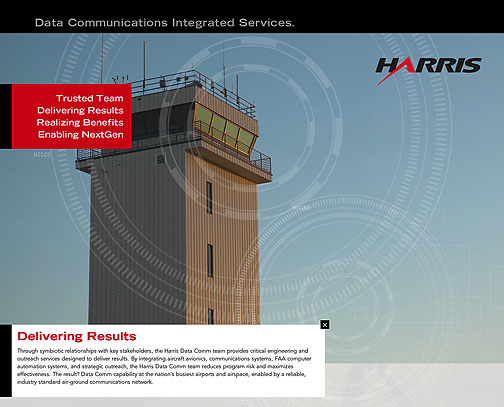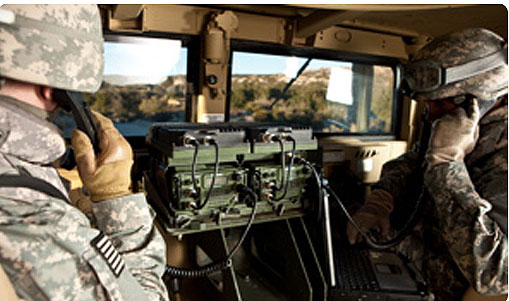
[SatNews] FTI securely connects more than 4,300 national and international FAA and DoD facilities, manages over 26,000 services, and supports more than 50,000 users.
Harris Corporation (NYSE:HRS) has been awarded a seven-year, $331 million contract to provide highly reliable air/ground data communications services for a key Federal Aviation Administration (FAA) program. The contract has 10 one-year options that could extend the duration of the program to 2029.
Under the Data Communications Integrated Services (DCIS) contract, Harris and its teammates will provide integration and engineering services for the end-to-end DataComm system, including management and delivery of data communications services leveraging commercial air-to-ground digital data link networks to connect FAA air traffic control (ATC) sites and data communications-equipped aircraft. Harris will also establish an outreach initiative to encourage and incentivize aircraft operators to equip their aircraft with DataComm-compatible avionics.
DCIS is a key component of the FAA’s DataComm program, which ultimately will automate many of today’s routine ATC and en route voice communications with specialized data messaging equivalents.
The goal of DataComm is to ensure more reliable ATC communications; enable trajectory-based routing; and improve arrival and departure routes – saving fuel and reducing emissions. DataComm is an essential element of the FAA’s Next Generation Air Transport System initiative to transform the U.S. air traffic control system to meet future requirements.
The Harris DCIS team includes leading aviation and communications innovators with extensive experience and advanced labs/facilities: Adfero Group, American Airlines, ARINC, The Brattle Group, CGH, EES, Egis Avia, GE, HCRQ, NATS, Sunhillo, Thales and Washington Consulting Group.
"DCIS lays the groundwork for the move from traditional air traffic control to more active air traffic management,” said John O’Sullivan, vice president, Mission Critical Networks, Harris Government Communications Systems. “Our approach to this effort reflects the same high standards that Harris adopted during the successful FAA Telecommunications Infrastructure (FTI) program, which the FAA has called a model of government and industry partnership.”
Harris has a long history of developing and integrating system solutions for the FAA in support of the National Airspace System (NAS). The company is the prime contractor for the FTI program, which provides critical voice, data and video communications for NAS operations and mission support functions. FTI securely connects more than 4,300 national and international FAA and DoD facilities, manages over 26,000 services, and supports more than 50,000 users. Other FAA programs developed by Harris include:
- The Weather and Radar Processor which provides weather processing dissemination and display capabilities to air traffic controllers in the en-route air traffic control environment;
- OASIS, which provides integrated weather briefing and flight planning capabilities for preflight weather briefings and in-flight updates in a managed service model;
- The NAS Voice System, which provides a secure, IP-based voice network for critical communications between air traffic controllers, pilots and ground personnel nationwide; and
- The Alaskan Satellite Telecommunications Infrastructure program, which provides voice and data communications between the Alaskan Air Route Traffic Control Center in Anchorage and 64 regional FAA sites.
Harris Packs Falcons For Foreigners


